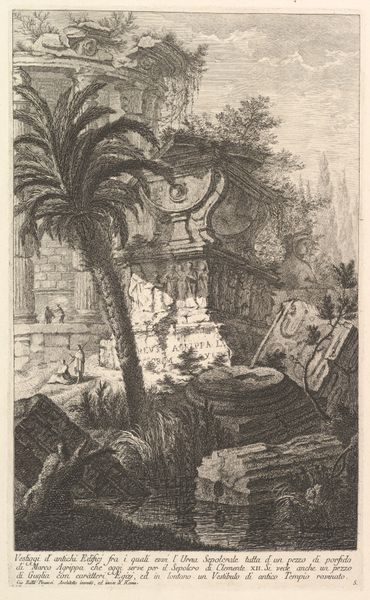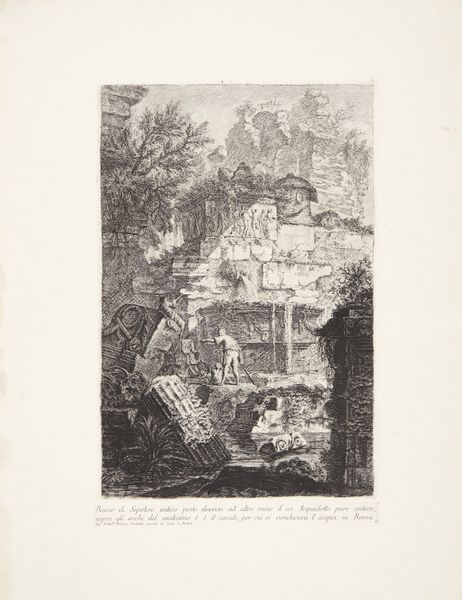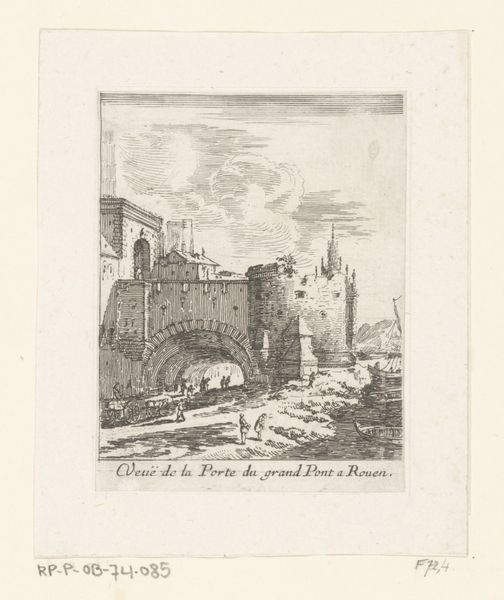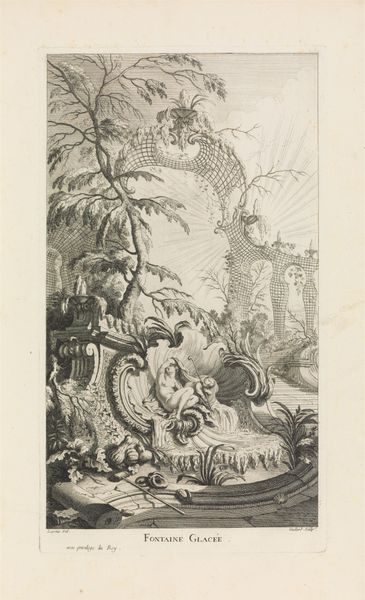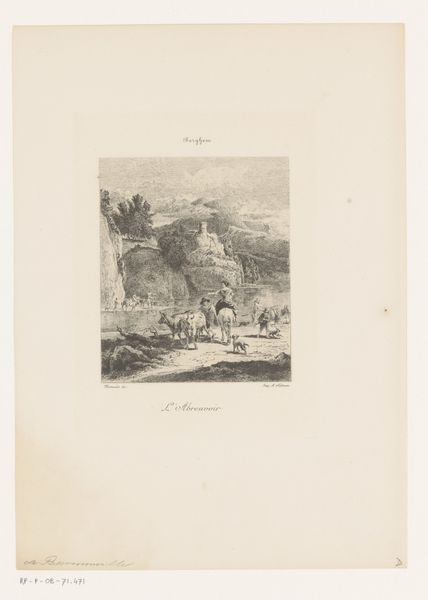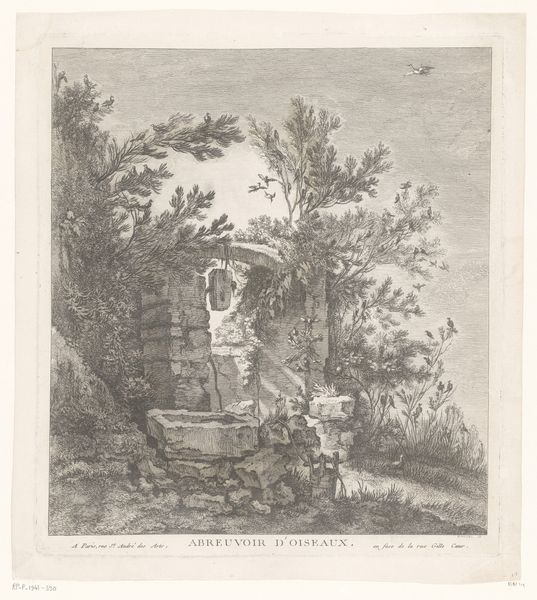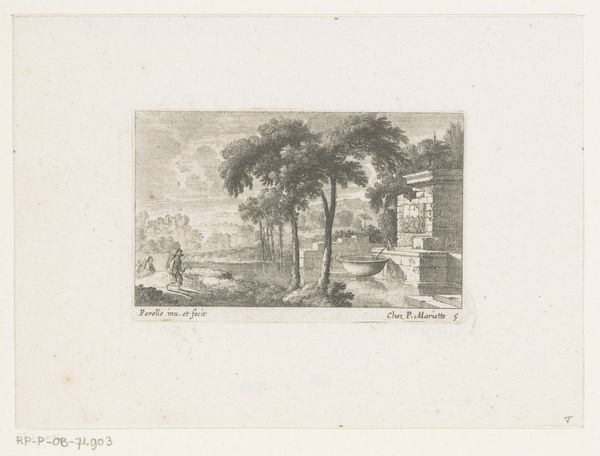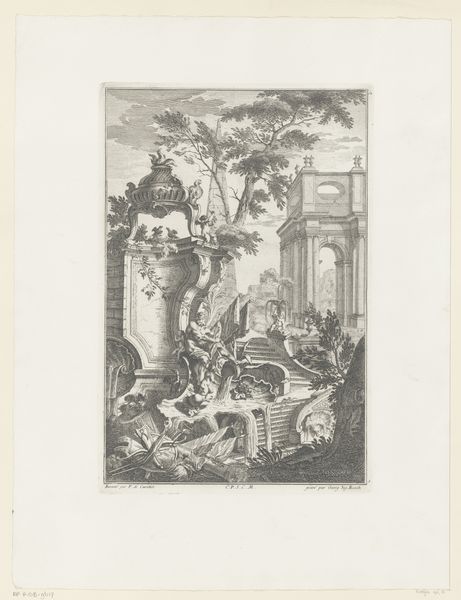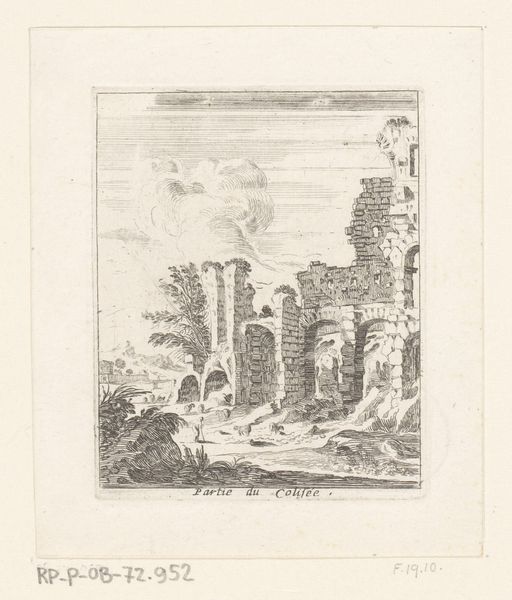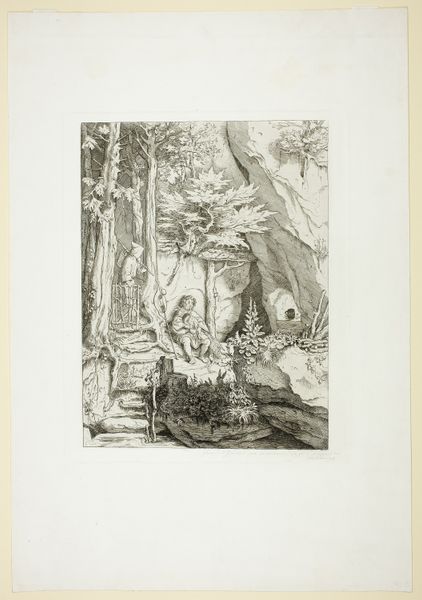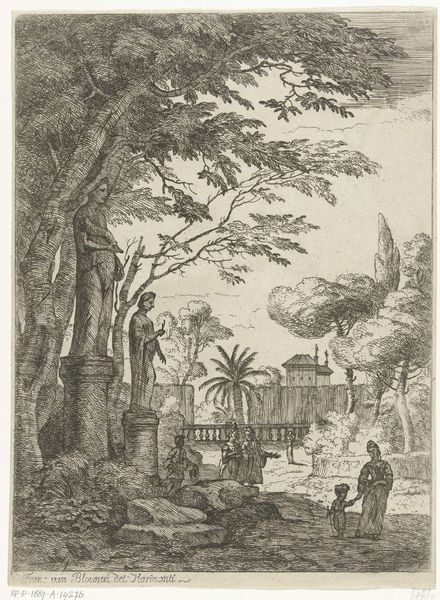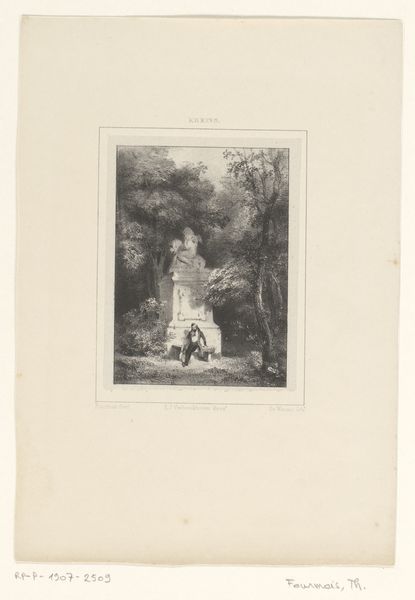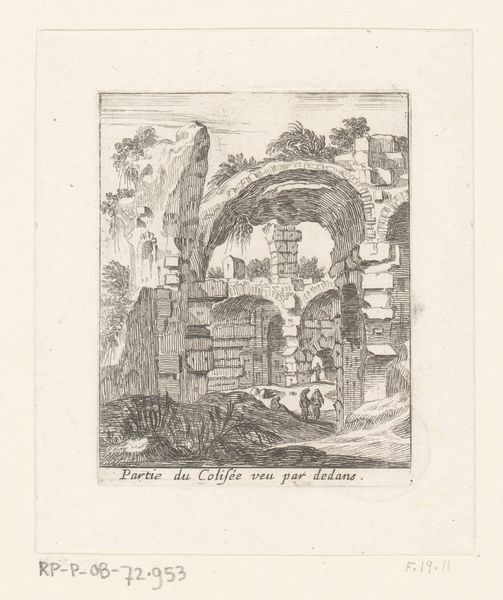
Remains of ancient buildings among which stands the sepulchral urn of Marcus Agrippa made entirely of porphyry, which serves today as tomb of Clement XII ... 1743
0:00
0:00
Dimensions: 388 mm (height) x 240 mm (width) (plademaal)
Curator: This print by Giovanni Battista Piranesi, dating back to 1743, depicts the remains of ancient buildings. It's titled "Remains of ancient buildings among which stands the sepulchral urn of Marcus Agrippa made entirely of porphyry, which serves today as tomb of Clement XII...". It’s quite a mouthful! Editor: Immediately, the composition strikes me as dynamic, almost chaotic. There's a strong contrast between the intricate detail of the ruins and the overall impression of decay. The palm tree adds an unexpected, almost jarring element to the scene. Curator: Indeed, Piranesi's skill in engraving brings out the textures and architectural details masterfully. The composition plays with light and shadow, guiding our eye through the fragments of the past. We can appreciate how he emphasizes the overwhelming scale of the ruins to convey their sublime quality. Editor: From a historical perspective, the image underscores a theme common in Neoclassical art—the confrontation with the grandeur and decline of past empires. The appropriation of Agrippa's urn for Clement XII is particularly evocative, revealing how each era repurposes the artifacts of its predecessors for their needs. The architecture becomes almost symbolic of societal shifts and continuities across time. Curator: Absolutely. Formally, this points to a strategic employment of ruins to create visual depth and dramatic effect. Piranesi uses the play of diagonals and horizontals to enhance the visual narrative. The texture, obtained through layered engraving, further reinforces this feeling. Editor: How might the print have been perceived by its contemporaries? Was this simply an aesthetic appreciation of decay, or was there a social commentary embedded in the depiction of crumbling power? Perhaps the intention was also to inspire a new age from the vestiges of previous civilisations. Curator: Both, most likely. Piranesi caters to an audience steeped in Neoclassical ideals, fascinated by the physical remains and philosophical implications of Roman history. However, beyond the ruins, there's also his masterful command of perspective, chiaroscuro, and composition, which adds to the viewing experience. Editor: Understanding the social underpinnings allows a richer understanding of the symbolic framework underpinning his approach. Well, looking again, I now recognize in his ruins not just decay, but rather echoes of ambition. Curator: And I appreciate your historical contextualization to recognize Piranesi's visual construction goes beyond aesthetics; it embodies historical reflection and sociopolitical commentary, deepening my regard for the print.
Comments
No comments
Be the first to comment and join the conversation on the ultimate creative platform.
